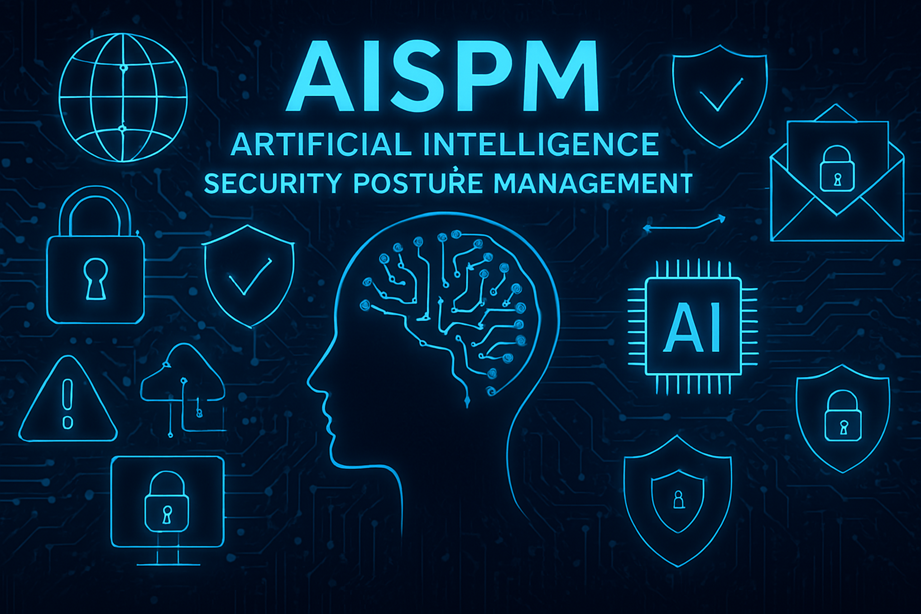
Status: Final Blueprint
Author: Shahab Al Yamin Chawdhury
Organization: Principal Architect & Consultant Group
Research Date: April 9, 2024
Location: Dhaka, Bangladesh
Version: 1.0
The New Imperative: Securing the AI-Driven Enterprise
The integration of Artificial Intelligence (AI) is a present-day reality, creating a new, dynamic, and complex digital attack surface. With the AI in Cybersecurity market projected to reach $93.75 billion by 2030, it’s clear that the novel risks introduced by AI systems require a specialized strategic framework. Artificial Intelligence Security Posture Management (AISPM) is the essential discipline for governing and securing the entire AI ecosystem—its models, data, and infrastructure. It evolves beyond traditional security by addressing dynamic, learning systems whose risks are emergent and adaptive.
AISPM is the necessary successor to Cloud Security Posture Management (CSPM) and Data Security Posture Management (DSPM). While CSPM secures cloud infrastructure and DSPM protects data, AISPM adds the critical third dimension: Model Security. It provides an integrated framework to manage the complex, interdependent risks between data, models, and infrastructure, recognizing that a weakness in one domain inevitably compromises the others.
The Adversarial Frontier: A Taxonomy of AI Threats
The threat landscape for AI is sophisticated and rapidly evolving. To navigate it, organizations must understand the key attack vectors.
- MITRE ATLAS Framework: This framework acts as a “kill chain” for AI attacks, outlining adversary tactics from initial Reconnaissance and Resource Development to final Impact. Key tactics include Evasion (crafting inputs to fool models), Model Poisoning (corrupting training data to create backdoors), and ML Supply Chain Compromise.
- OWASP Top 10 for LLMs: This focuses on application-layer vulnerabilities when integrating Large Language Models (LLMs). Critical risks include:
- LLM01: Prompt Injection: Manipulating a model’s output by overwriting its original instructions.
- LLM02: Insecure Output Handling: Blindly trusting LLM output, leading to traditional vulnerabilities like XSS or RCE.
- LLM06: Sensitive Information Disclosure: Coaxing a model to reveal confidential data from its training set.
- Core Integrity & Confidentiality Attacks: Beyond frameworks, foundational threats like Data Poisoning, Model Theft (replicating a model’s functionality via API queries), and Privacy Attacks (inferring sensitive training data) represent silent forms of sabotage that can undermine an AI system’s core trustworthiness.
The AISPM Framework: An Operational Blueprint
An effective AISPM program is built on a continuous cycle of four interconnected pillars that translate theory into concrete operations.
- Discovery and Inventory: You can’t protect what you don’t know. This pillar focuses on creating a comprehensive AI Bill of Materials (AI-BOM) to catalog all models, data, and pipelines, countering the risk of “Shadow AI.”
- Continuous Assessment & Threat Modeling: Moving beyond point-in-time checks, this involves ongoing risk evaluation, “shift-left” threat modeling for AI systems, and proactive AI Red Teaming to find vulnerabilities before they are exploited.
- Policy Enforcement & Governance: This pillar translates rules into automated technical controls (“policy-as-code”). It enforces data governance, access control, and model usage guardrails throughout the MLOps pipeline.
- Runtime Monitoring & Incident Response: This involves real-time threat detection of model inputs and outputs, coupled with an AI-specific Incident Response Plan (IRP) containing playbooks for unique threats like model poisoning or evasion.
Global Landscape and Strategic Action
Navigating the global regulatory environment and maturing internal capabilities are critical for a successful AISPM program.
- Regulation & Standards: The EU AI Act sets a global benchmark for AI governance, imposing strict lifecycle requirements on “High-Risk” systems. Compliance can be achieved by aligning with complementary frameworks like the NIST AI Risk Management Framework and the certifiable ISO/IEC 42001 standard for AI Management Systems.
- The AISPM Maturity Model: Organizations can benchmark their capabilities against a five-stage model—from Ad-Hoc to Optimized—to create a clear roadmap for improvement. The goal is to move from a reactive stance to a data-driven, adaptive, and business-aligned security posture.
C-Suite Recommendations
For executive leadership, AISPM is a matter of corporate governance. Key actions include:
- Establish Clear, Centralized Ownership of AI Risk to close accountability gaps.
- Integrate AISPM into the Enterprise Risk Management (ERM) Framework to ensure consistent oversight.
- Mandate a “Secure by Design” Philosophy for all new AI initiatives.
- Invest in AI Literacy for leaders and the workforce to foster a strong security culture.
- Demand Quantitative Metrics on AI security posture for effective, data-driven oversight.
By adopting this strategic approach, organizations can build stakeholder trust and confidently harness the transformative potential of AI.